
Otet View on Saturday, May 11, 2024
While we had an extraordinarily light week for US economic data, central banks outside of the US were in the spotlight. For the week ahead, we have US inflation data at the center stage (Wednesday), but we should also follow the UK Labor market data (Tuesday), Japan’s GDP (Thursday), China’s Retail Sales, and Industrial Output (Friday).
Before moving forward and observing the markets in the week ahead, let’s review the central banks’ decisions from last week. The central banks in the UK (BoE), Australia (RBA), and Mexico (Banxico) all held their policy rates steady. However, while the Bank of England offered a dovish outlook, the RBA and Banxico were hawkish in their outlooks and comments. Elsewhere, Sweden’s Riksbank and Brazil’s central bank (BcB) both cut their policy rates by 25 bps to 3.75% and 10.50%, respectively.
Wall Street
So far, 450 S&P 500 companies have reported Q1 earnings with an “upside surprise” of 8.3%, which is 200 bps higher than the +6.3% in Q4 2023. According to published reports, Financials have been performing very well. It’s worth noting that consumer discretionary and communication services have also seen higher expected growth rates, while technology has lost some of its relative strength in terms of the stock market. Overall, with these reported actual results for Q1 2024 to date, 77% have reported actual Revenue above estimates, which is equal to the 5-year average of 77% but above the 10-year average of 74%. On the EPS front, companies that reported earnings are 7.5% above estimates, which is also above the 10-year average of 6.7%.
From the perspective of the economic situation and according to the University of Michigan’s surveys, both Consumer sentiment and expectations are down in May, while other data also shows increasing consumer credit. Michigan Consumer Expectations fell to 66.5 from 76.0 in April, and Consumer Sentiment is down to 67.4 from 77.2 in its previous publication. In addition, Consumer 1 and 5-year inflation expectations also increased, respectively, to 3.5% and 3.1% in May, from a month ago. These numbers were not just above estimates but also marked the highest level since August 2023.
Regarding the labor market, after the NFP data two weeks ago, last week’s initial jobless claims jumping to 231K in the week ended May 4 were somewhat surprising. A cooling labor market coupled with the soft return of inflation has put the central bank in a dilemma. Therefore, the inflation data in the coming week will be very important, as it will shed light on what the central bank can do in the coming months. Higher than estimated data will pressure the stock market’s trend, but slower digits can help the bulls move forward. However, it’s worth remembering that the reason for this performance is the weaker economic data, therefore, bulls cannot move very powerfully.
From a technical standpoint, the US500 is back to a soft uptrend with strong resistance at 5,220. If it crosses it and holds above that level, we should consider repeating the previous highest level and setting new records. On the flip side, we have the pivot point at 5,150, and breaching under this level will change the equations, and the bears will take over the trend. S1 and S2 are sitting at 5,050 and 4,960.
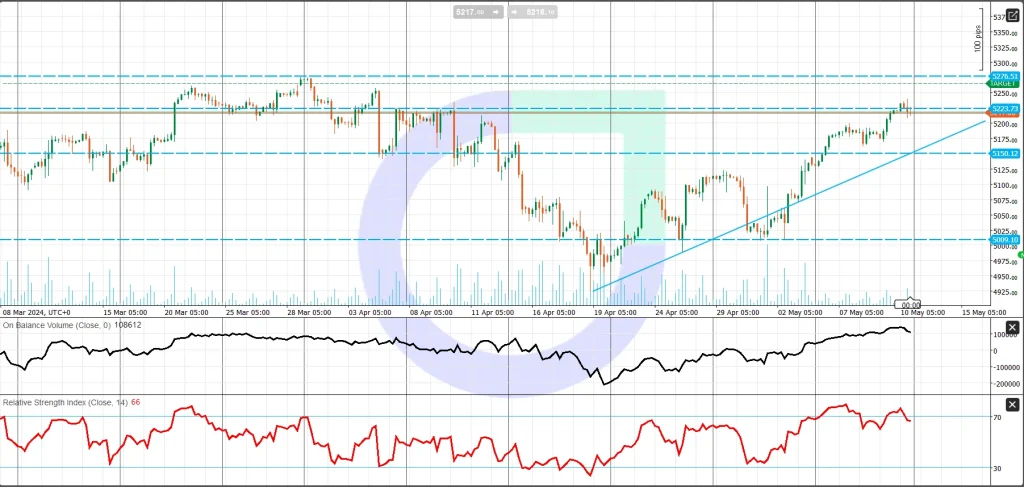
Forex
With central banks’ meetings last week, most of the focus in the currency market was on the AUD and GBP, while the USD, as always, was at the center of the stage. The Chinese Yuan and Japanese Yen also received good attention due to the Central Bank of Japan’s cash injection and Chinese economic data.
In the US, as mentioned above, we had mixed economic data, but most of it was about a weaker job market, increasing consumer credit, and lower consumer confidence. Ahead of the upcoming CPI data in the week ahead, for now, market pricing for a 25 bps rate cut in September, is a much more dovish stance compared to two weeks ago when there was chatter about the possibility of an interest rate hike. With the current sentiment, we can expect the USD to slow down a bit and receive some pressure before Wednesday’s inflation data.
The market expects both CPI and Core CPI to increase by 0.3% in April. The Core PCE Price Index, which is the Fed’s preferred inflation gauge, rose by 0.3% in March, while on an annual basis, Core PCE rose by 2.7% in March, dropping marginally from February’s 2.8% print. March Core PCE Price Index data showed that US disinflation is progressing, albeit slowly. Higher than-expected inflation will change the DXY trend to the previous bullish tendency. However, if we see a faster reduction in the inflation rate, bears may be encouraged to push the USD further down.
On the geopolitical front, due to rising tensions in the Middle East, USD safe-haven demand is increasing. The conflict between Israel and Hamas is expected to influence forex markets in the weeks to come. As long as there is no clear prospect of peace, risk-aversion sentiment remains high, which is in favor of the US dollar.
From a technical standpoint, S1 sits at 105.10, and below that, we have S2 at 104.60. For now, the strong pivot sits at 104, and we do not have enough reason to see the USD Index under this level. On the bullish side, R1 is seen at 105.80, with 106.50 above that as the second resistance.
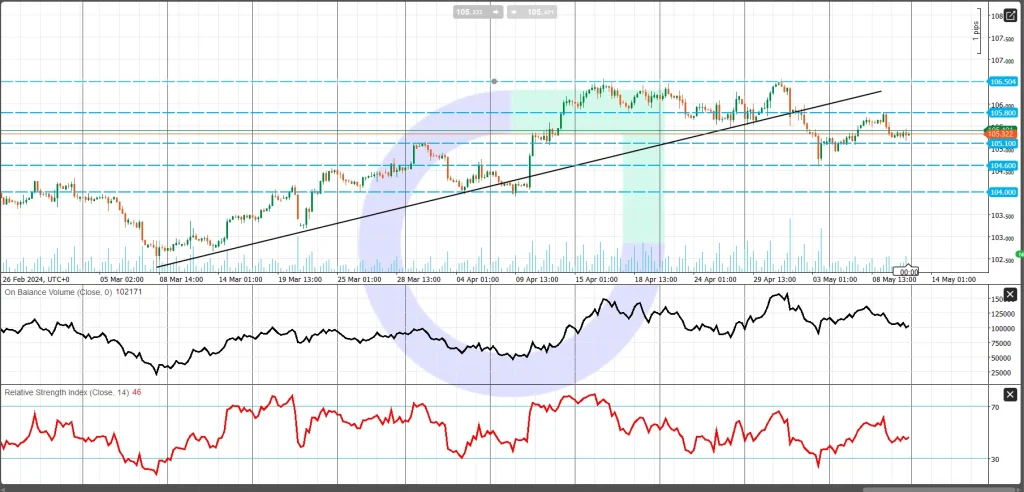
Among other currencies, the Euro ended the week almost at the same level as it started. After zero growth in the last quarter of 2023, the preliminary Flash GDP data showed that the Eurozone economy expanded by 0.3% in the first quarter, beating 0.1% estimates. While overall Eurozone data is somewhat acceptable, the German economy is still struggling. German factory orders dropped unexpectedly in March, according to data released on Tuesday. Factory orders shrank by 0.4% in March compared to the 0.4% growth projections. February’s reading was also revised down to a 0.8% decline.
With this data, the Euro is still under pressure as market participants expect the ECB to start lowering interest rates by June. Markets are currently pricing in 75 bps of ECB rate cuts in 2024.
From a technical point of view, no changes have been made to the EURUSD chart. You can check the support and resistance levels in the chart below.
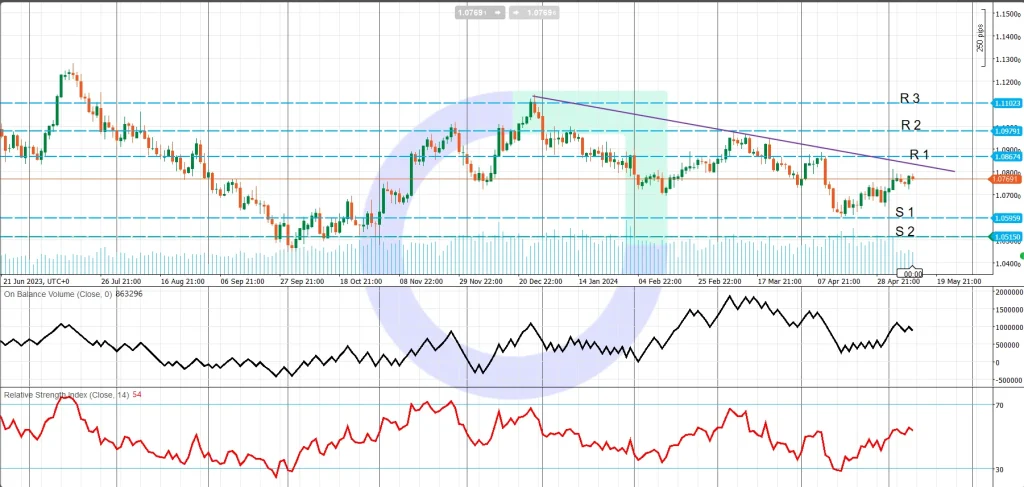
GBP/USD surged to the 1.2523 level on Friday’s close after the BOE kept interest rates steady. By holding the rates unchanged and taking a dovish pivot, Sterling was weakened to some extent against its competitors. However, it was the greater weakness of the US dollar that caused the pairing to experience relative growth on Thursday and Friday.
The British economy slipped into a recession last year, contracting by 0.3% in the final quarter of 2023. However, the monthly GDP data for February released last week confirmed a strong recovery in the first quarter of 2024. Therefore, it seems likely to adopt some dovish stance to sustain the progress. In the week ahead, we have to watch the UK labor market data on Tuesday.
From a technical point of view, GBP/USD is challenging the current downtrend above 1.25. If the pairing can hold this level, 1.27 can be the next target. However, returning under the key pivot of 1.25 can give bears more room to maneuver.
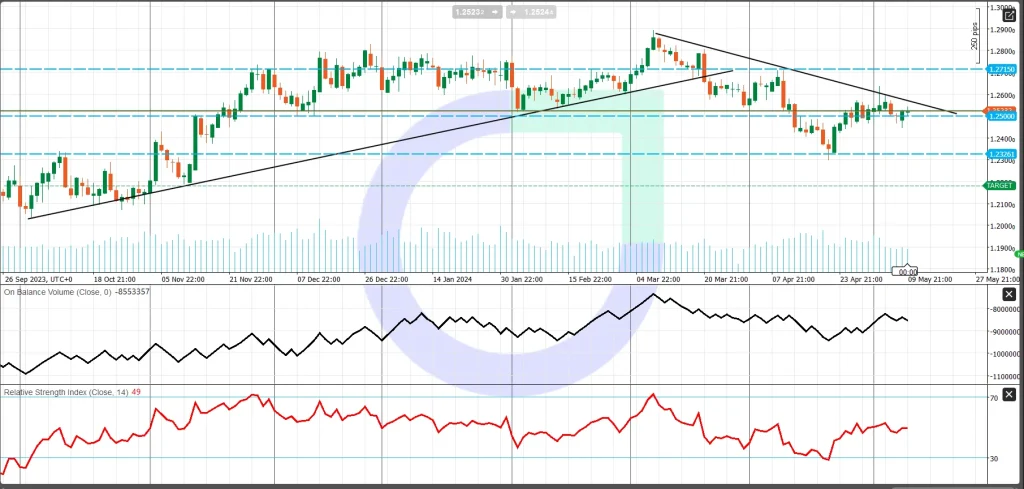
Commodity and Energy Market.
In the commodity and energy markets, gold and silver saw increased demand due to a weaker USD and higher market risk sentiment. Despite the recent recovery in the stock markets, the number of investors and traders who believe in these price levels in the stock markets is decreasing. This suggests profit-saving and exiting the stock market, which increases demand for gold and silver. Additionally, the relative weakness in the US dollar also supports the gold price. Therefore, the overall uptrend picture remains unchanged.
From a technical point of view, XAUUSD has moved above its 50% Fibonacci Fan level. In the bigger picture, holding above its 61.8% level, with strong support at $2,270, supports the bulls. Breaching its support level can change market sentiment in the short term.
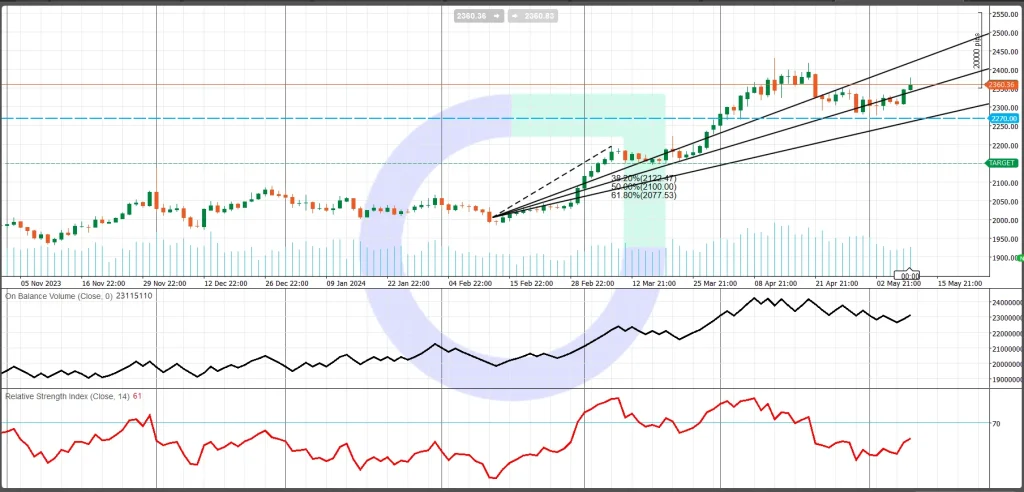
In the energy market, the week ahead will be very important with Japan’s GDP on Thursday, China’s Retail Sales and Industrial Output on Friday, the OPEC Monthly Report on Tuesday, and the IEA Monthly Report on Wednesday. After some weak data in recent weeks, last week we had better-than-expected economic data out of China, while inflation also increased by 0.3% in April. Additionally, China’s trade data confirmed many more imports last month, which usually means more energy and raw material imports, thereby helping the overall energy price.
Adding to ongoing tensions in the Middle East and Ukraine, we can expect a pause in the downtrend and a return above $80. In the EIA short-term energy outlook published last week, the WTI price is estimated to be around $90 for this quarter and the end of the year.
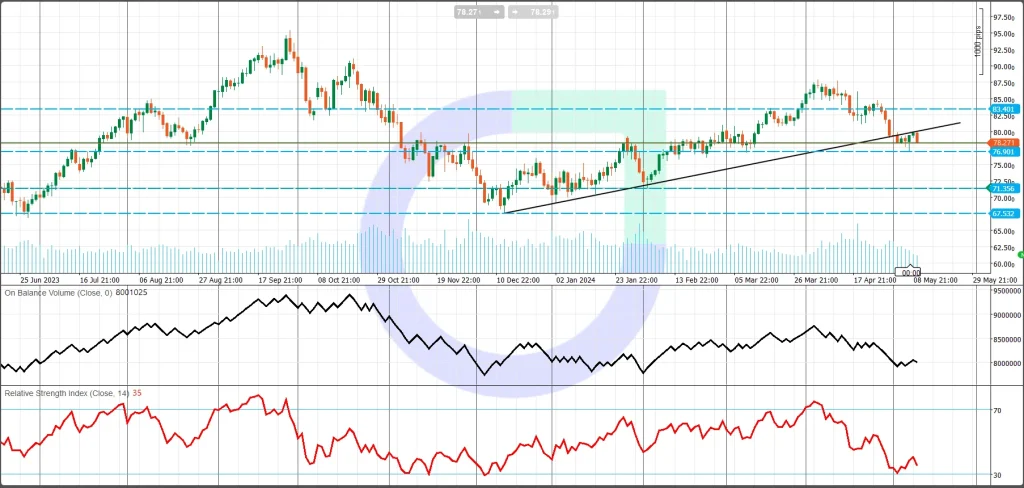
Cryptocurrency
In the cryptocurrency market, we did not have market-moving news and data, just a few reports about some banks and companies buying BTC ETFs. From a technical standpoint, bitcoin bears found support above the 60K level. However, losing this level will put 56K and then 52K on the radar.
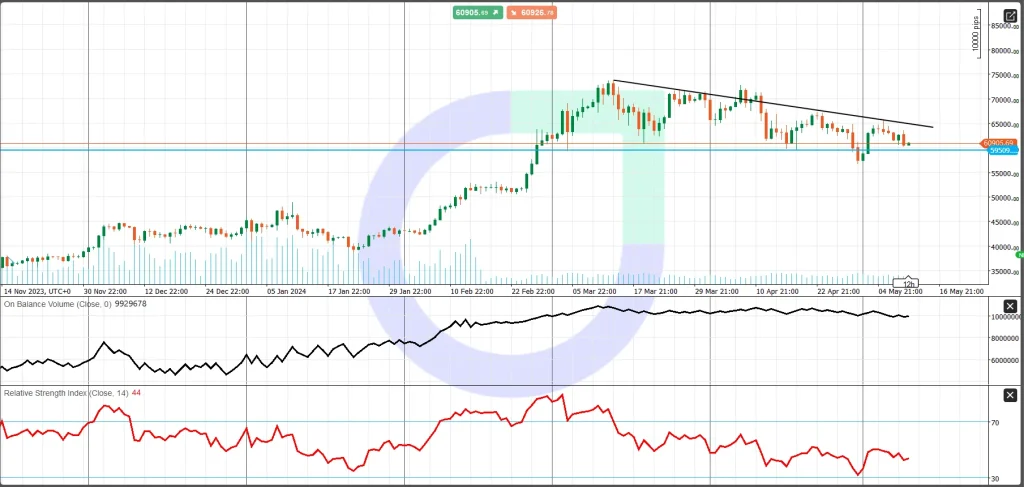
Share
Hot topics

What Is Forex Fundamental Analysis?
Forex trading can seem confusing from the outside. Charts move quickly, prices change every second, and traders talk about pips (the smallest unit of price movement), spreads (the difference between...
Read more
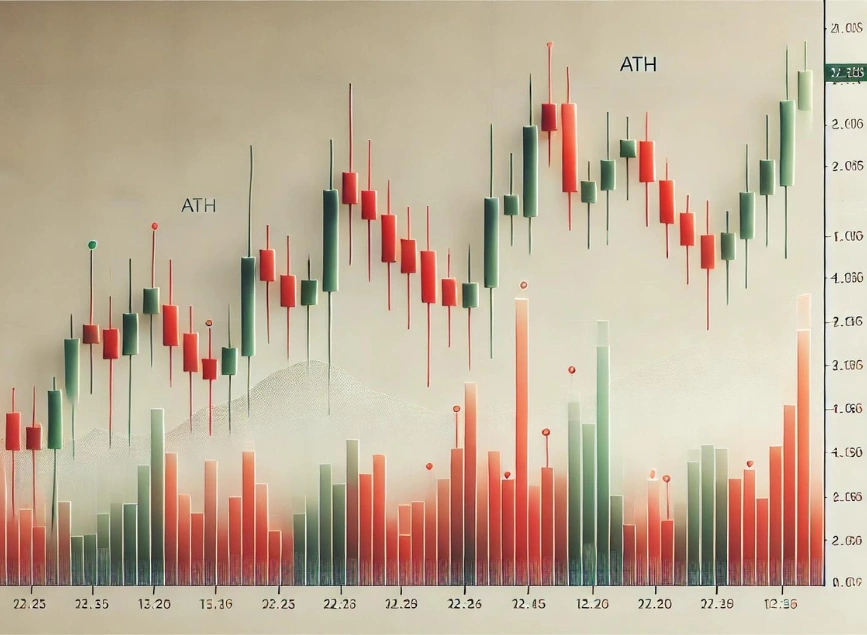



Submit comment
Your email address will not be published. Required fields are marked *